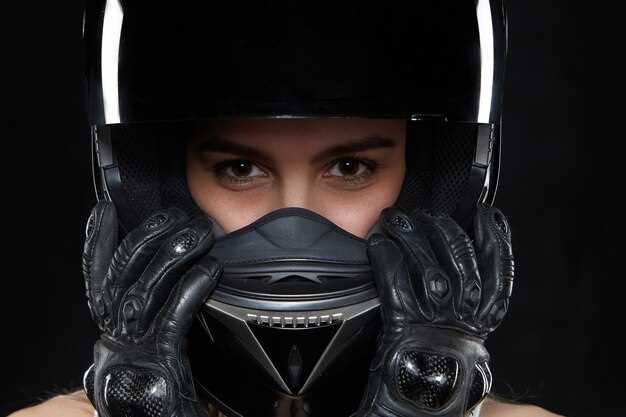
In the world of motorsport, the term FIA (Fédération Internationale de l’Automobile) is synonymous with quality and safety. As racing enthusiasts dive into club racing, one of the fundamental questions arises: is FIA-approved gear really necessary? This topic is vital for both newcomers and seasoned participants who seek to understand the implications of using certified equipment in club racing.
The importance of gear in motorsport cannot be overstated. It encompasses everything from helmets and suits to gloves and boots, each designed to protect the driver during high-speed competition. The role of the FIA in setting stringent standards ensures that the equipment used in racing meets the highest safety requirements. Thus, understanding the necessity of FIA approval for gear is crucial for anyone serious about participating in club racing.
Moreover, the regulations around club racing can vary significantly, which leads to varied opinions on the necessity of using FIA-approved gear. While some clubs might not enforce these standards strictly, opting for FIA-approved equipment may provide drivers with peace of mind and an edge in performance. This article delves into the reasons behind the necessity of FIA-approved gear in club racing, exploring its impact on safety, competition fairness, and overall racing experience.
FIA Approved Gear Club Racing: Is It Necessary?
The debate surrounding the necessity of FIA approved gear in club racing is ongoing among enthusiasts and competitors. Safety, performance, and compliance are key considerations when choosing gear for racing activities.
FIA, or the Fédération Internationale de l’Automobile, sets rigorous standards for racing equipment. Gear that meets these specifications is often seen as essential due to various factors:
- Safety: FIA approved gear is designed to protect drivers in case of accidents. This includes fire-resistant suits, helmets, and gloves that meet specific safety regulations.
- Performance: High-quality gear can enhance driver performance. Approved equipment is typically lighter and more ergonomic, allowing for better maneuverability and comfort during races.
- Insurance and Liability: Many racing organizations require FIA approved gear to ensure participants are adequately protected, potentially affecting insurance coverage and liability in case of incidents.
- Regulatory Compliance: Following FIA guidelines helps racers comply with local and international regulations, making it easier to compete in sanctioned events.
However, some argue that while FIA approved gear enhances safety and performance, it may not always be necessary for all levels of club racing. Here are some considerations:
- Entry-Level Participation: For beginners or casual racers, basic safety gear may suffice, as they may not engage in high-risk scenarios.
- Cost: FIA approved gear can be expensive. Many participants might find it challenging to invest in high-quality equipment, particularly if they are new to the sport.
- Personal Preference: Some drivers may feel comfortable with gear that meets alternative safety standards or their own experiences.
In conclusion, while FIA approved gear offers significant advantages in terms of safety and performance, the necessity of such equipment depends on various factors including the level of racing, budget constraints, and personal comfort. Choosing the right gear ultimately enhances the racing experience and ensures competitive integrity.
Understanding the Importance of FIA Approval for Racing Gear

When participating in club racing, selecting the right gear is crucial for both safety and performance. The FIA (Fédération Internationale de l’Automobile) sets the standards for racing safety equipment, ensuring that all gear, from helmets to suits, meets strict regulations. Having FIA-approved gear signifies that it has undergone rigorous testing and complies with international safety standards.
The importance of FIA approval cannot be overstated. In the high-stakes environment of racing, even minor equipment failures can have catastrophic consequences. FIA-certified gear enhances drivers’ protection against fire, impacts, and other risks associated with motorsport. It provides a layer of security that not only supports racers’ safety but also fosters confidence in their equipment.
Furthermore, many club racing events mandate the use of FIA-approved gear as a part of their rules and regulations. This requirement ensures a level playing field, where all participants are equipped with gear that meets the same high safety standards. Using non-certified gear may not only put drivers at risk but could also lead to disqualification from races.
In conclusion, choosing FIA-approved gear is essential for anyone involved in club racing. It not only protects racers but also aligns with the rules of the sport, promoting fairness and safety on the track. Investing in approved gear is a smart decision that emphasizes the importance of safety in motorsport.
How FIA Gear Enhances Safety in Club Racing Environments

FIA-approved gear plays a crucial role in enhancing safety within club racing environments. The design and manufacturing of this equipment adhere to stringent international standards, ensuring that participants are well-protected during competitive events. Helmets, suits, gloves, and footwear that meet FIA specifications undergo rigorous testing to withstand extreme conditions and impacts.
One of the primary benefits of using FIA-approved helmets is their advanced materials, which provide superior impact resistance. These helmets are engineered to absorb and dissipate energy during collisions, significantly reducing the risk of head injuries. Additionally, the inclusion of features such as fire retardant liners further bolsters safety, protecting drivers in the event of a vehicle fire.
Racing suits certified by the FIA are crafted from fire-resistant fabrics, offering vital protection against flames and heat. These suits are designed to keep drivers safe for an extended period during an incident, exponentially reducing the risk of severe burns. The multi-layer construction of these suits improves their effectiveness, making them a necessary component for any club racer.
FIA-approved gloves provide enhanced grip and dexterity while offering protection from heat and abrasion. The materials used are specifically selected to ensure optimal performance without compromising on safety. When drivers wear these gloves, they can maintain better control over the vehicle, which is essential for preventing accidents.
Footwear designed in compliance with FIA standards protects the feet and enhances pedal control. Specialized soles ensure that drivers maintain consistent contact with the pedals, reducing the likelihood of slip-related accidents. The ankle-support features in these shoes also help prevent injuries during sudden maneuvers.
In summary, utilizing FIA-approved gear in club racing environments is critical for safety. The comprehensive protective benefits of helmets, suits, gloves, and footwear certified by FIA contribute to a safer racing experience, ultimately promoting a culture of safety within the club racing community.
The Cost-Benefit Analysis of Investing in FIA Approved Equipment
Investing in FIA approved equipment is a critical consideration for club racing enthusiasts. The initial costs associated with purchasing certified gear can be significant, but it’s essential to weigh these expenses against the potential benefits.
Firstly, safety is paramount in any form of racing. FIA approved gear meets rigorous safety standards, providing drivers with protection against accidents. This is not only crucial for personal safety but also for compliance with racing regulations, which can prevent disqualification from events. The assurance of high safety standards can often justify the upfront investment, considering the consequences of inadequate protection.
Secondly, performance enhancement is another factor to consider. FIA approved equipment is designed to optimize a driver’s performance under competitive conditions. High-quality helmets, racing suits, and other gear reduce distractions, improve comfort, and enhance overall driving capabilities, which can lead to better race results. Therefore, investing in such equipment can yield potential gains in positioning and recognition within the racing community.
Moreover, using approved equipment can enhance a club racer’s credibility. Participating in events with recognized gear showcases a commitment to the sport and adherence to established safety practices. This professionalism may attract sponsorships or partnerships, providing financial benefits and access to additional resources that can further improve racing experience.
On the financial side, while the upfront costs of FIA equipment are high, they often pay off in the long run. Reduced risk of injury can lead to decreased medical costs, and the durability of quality equipment means it may last longer than cheaper alternatives. Additionally, some clubs offer incentives for racers who use approved gear, such as lower entry fees or eligibility for certain competitions.
In conclusion, while the investment in FIA approved equipment for club racing presents a notable financial commitment, the benefits in terms of safety, performance, and credibility can significantly outweigh these initial costs. Ultimately, a thorough consideration of these factors will guide racers in making informed decisions about their gear investments.











